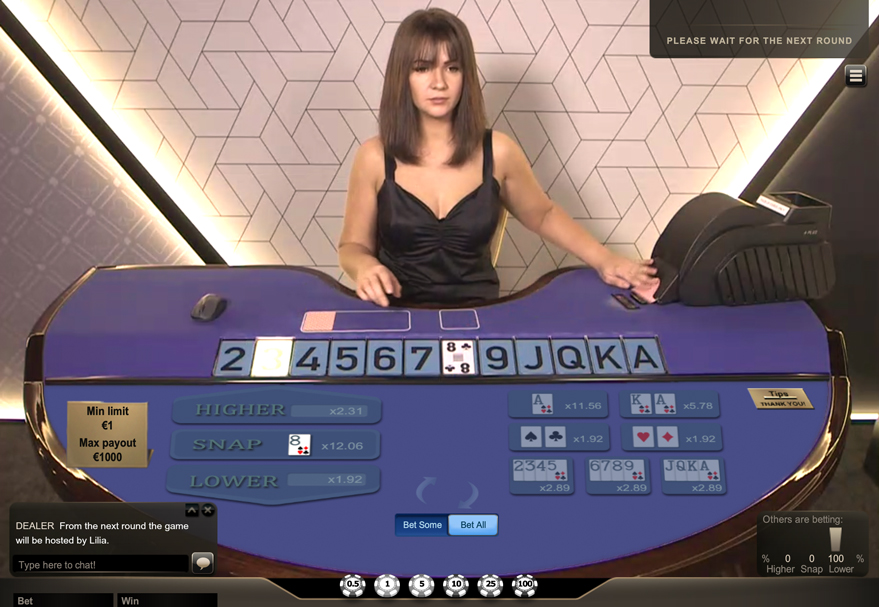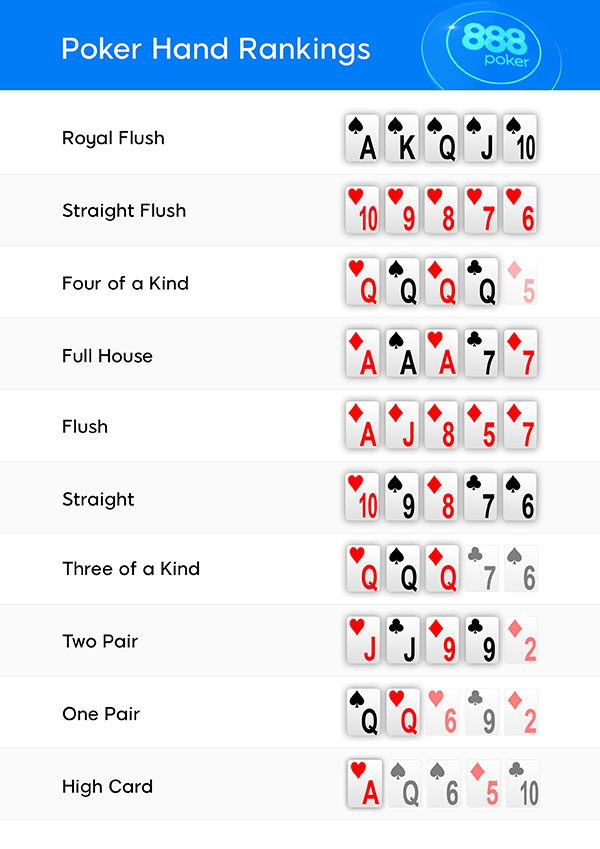How To Play Hi Lo Poker
The rules of Omaha hi-lo is usually played with a 'qualifier' for the low hand, meaning all of the cards making up a low hand have to be ranked eight or lower. That's where the 'split-8-or-better'. The fascinating point to remember when playing Omaha Hi-Lo is that the pot is slashed in half between the player with the best hand as well as the player with the weakest hand qualifying for the low hand. Omaha Hi-Lo is a “split pot” variant of the famous Omaha poker. The Six Stages of a Omaha Hi Lo Poker Hand. A Omaha Hi Lo poker hand is played in a identical way to a standard Omaha hand. For a more detailed explanation of the stages then read our How to Play Omaha Poker. Omaha Hi-Lo is a poker game that uses community cards – These are cards that all players at the table can use in conjunction with their own hole cards, which in the case of Omaha Hi-Lo Poker is 4.
Table Of Contents
What is Omaha Hi-Lo Split-8-or-Better Poker?
If you know how to play pot-limit Omaha (or 'Omaha high'), you are well on your way to learning how to play Omaha hi-lo.
As the name suggests, Omaha hi-lo is a 'split-pot' version of Omaha poker in which players compete for both the 'high' and 'low' halves of the pot. Omaha hi-lo is usually played with fixed-limit betting and often turns up in 'mixed game' formats like H.O.R.S.E. (in which Omaha hi-lo is the 'O') or the popular 8-game mix.
You will sometimes see the game referred to simply as 'Omaha 8' or even 'O/8' or more elaborately as 'Omaha hi-lo split-pot-8-or-better.' The name gets styled differently, too, as 'Omaha High-Low,' 'Omaha poker high-low' and so on.

Pot-limit and no-limit versions of Omaha hi-lo are also popular, especially online either as cash games or tournaments.
How to Play Omaha Hi-Lo Split-8-or-Better Poker
The basic rules for Omaha hi-lo are very similar to pot-limit Omaha. See 'How to Play Omaha Poker' for an overview of how to play Omaha poker, which is itself a variation on regular Texas hold'em.
Just like in pot-limit Omaha, players are dealt four cards in Omaha hi-lo and are required to use two of those four cards in combination with three community cards in order to make a five-card poker hand.
As in hold'em or pot-limit Omaha, if a player bets and everyone folds before the showdown, the player wins the pot without having to show a hand. However, if the final bet is called and there is a showdown, hands are examined to see who has the best 'high' hand and who has the best 'low' hand, with each winning one-half of the pot.
Omaha Hi-Lo Split-8-or-Better Rules
In Omaha hi-lo, the 'high' hand is determined exactly the same way as in hold'em or Omaha 'high' games (like PLO), following traditional hand rankings.
The 'low' hand requires a little more explanation, especially if you are new to split-pot games or hi-lo poker.
First of all, whatever cards you use to make your high hand, that makes no difference when making your low hand. You can use the same two cards, the other two cards, or any combination just as long as you use two cards from your four-card hand plus three of the community cards to build your five-card poker hand.
The rules of Omaha hi-lo is usually played with a 'qualifier' for the low hand, meaning all of the cards making up a low hand have to be ranked eight or lower. That's where the 'split-8-or-better' comes from, a phrase usually added to the name of the game.
A qualifying low hand consists of five unpaired cards ranked eight or lower. For the low hand, the ace is considered a low card (the lowest), while it can also serve as the highest-ranking card in high hands.
Also worth noting — if your lowest five cards make a straight or a flush, that doesn't matter in Omaha hi-lo, you've still got a low hand (if all are ranked eight or lower). In other 'lowball' games like 2-7 no-limit triple draw, flushes and straights hurt you by making your low hand higher, but in Omaha hi-lo that is not the case.
That means a hand consisting of 5-4-3-2-A would be the lowest possible hand — that is to say, the best 'low hand' in Omaha hi-lo. This hand is sometimes called a 'wheel.' The next lowest possible hand is 6-4-3-2-A. The worst low hand that qualifies as a low in Omaha hi-lo would be 8-7-6-5-4.
A good way to figure out which low hand is best is to arrange the hand from highest card to lowest card and then to think of the hand as a five-digit number, with the lowest number being the best (or lowest) hand. Thus 5-4-3-2-A (54321) is better than 6-4-3-2-A (64321), and 6-4-3-2-A is better than 6-5-3-2-A (65321) and so on.
An Example of an Omaha Hi-Lo Split-8-or-Better Poker Hand
Let's say a hand of Omaha hi-lo goes to showdown with the final board reading 6♣3♠K♦Q♦.
You hold A♣K♠7♦4♣, and your opponent has Q♠J♦4♦2♠.
Your best possible high hand is two pair, aces and kings — using the A♣ and K♠ in your hand pairing them with the ace and king on board, with the queen being a kicker.
Your best possible low hand is 7-6-4-3-A — using the 7♦ and 4♣ in your hand along with the three low cards on the board. Note how you can't use the ace in your hand when making your low hand, since you have to use exactly two cards in your hand and three on the board (and there is an ace on the board).
Your opponent, meanwhile, has you beat both for the high and the low!
Your opponent's best possible high hand is a flush — using the two diamonds in his hand (J♦ and 4♦) and the three diamonds on the board.
Your opponent's best possible low hand is 6-4-3-2-A — using the 4♦ and the 2♠ in his hand along with the three low cards on the board. 64321 is lower than 76431, so your opponent has you beat.
Winning both halves of the pot like this is called a 'scoop' or 'scooping,' which is something you always want to try to do when playing split-pot or hi-lo poker games.
Sometimes in Omaha hi-lo there is no qualifying low hand. This is the case whenever there are less than three unpaired cards ranked eight or lower on the board.
For example, if the board is 9♣K♦A♥4♥J♠, there are only two cards ranked eight or lower on the board (the ace and four), which means it is impossible for anyone to make a low hand. When that happens, whoever has the best high hand scoops the whole pot.
Conclusion
Omaha hi-lo is not difficult to learn, especially if you already know how to play pot-limit Omaha. The strategy can be complicated, though, with a great deal of importance placed on understanding what are strong starting hands (e.g., hands containing an ace with at least one or two low cards, especially a deuce) and not making the mistake of battling for only half of the pot (just the high or low).

Must Have Rooms
Home to the biggest tournaments online, these rooms also have the largest player base, great bonuses, tons of action and the best software. If you don't have accounts here, you are missing out on the best that online poker has to offer.
partypokerplatinum
Up to $30 of Free Play!


RATING
9.9 ★
Key features
How To Play Hi Lo Jack
- Innovative social gaming software that includes missions and achievements
- Fast-paced fastforward poker
- One of the most trusted brands in online gaming

Free Hi Lo Poker
In hold'em, players receive two down cards as their personal hand (holecards), after which there is a round of betting. Three board cards are turned simultaneously (called the flop) and another round of betting occurs. The next two board cards are turned one at a time, with a round of betting after each card. The board cards are community cards, and a player can use any five-card combination from among the board and personal cards. A player can even use all of the board cards and no personal cards to form a hand ('play the board'). A dealer button is used. The usual structure is to use two blinds, but it is possible to play the game with one blind, multiple blinds, an ante, or combination of blinds plus an ante.Rounds of Betting
- Opening deal- Each player is dealt two cards face down, which are known as hole cards or pocket cards.
- First round of betting- Starting with the player to the left of the big blind, each player can call the big blind, raise, or fold. The big blind has the option to raise an otherwise unraised pot.
- The flop- The dealer burns a card, and then deals three community cards face up. The first three cards are referred to as the flop, while all of the community cards are collectively called the board.
- Second round of betting- Starting with the player to the left of the dealer button, each player can check or bet. Once a bet has been made, each player can raise, call, or fold.
- The turn- The dealer burns another card, and then adds a fourth card face-up to the community cards. This fourth card is known as the turn card, or fourth street.
- Third round of betting- It follows the same format as the second round, but the size of the bets have usually doubled in limit games.
- The river- The dealer burns another card, and then adds a fifth and final card to the community cards. This fifth card is known as the river card, or fifth street.
- Final round of betting- It follows the same format as the second and third rounds.
- The showdown- Using the best five-card combination of their hole cards and the community cards, the remaining players show their hands, with the bettor or last raiser showing first. The highest five-card hand wins the pot. (In case of a tie, the pot is evenly split among the winning hands.)
Omaha Hi Lo Poker Games
Free Omaha Hi Lo Poker
- These rules deal only with irregularities. SeeButton and Blinduse for rules on that subject.
- If the first or second hole card dealt is exposed, a misdeal results. The dealer retrieves the card, reshuffles, and recuts the cards. If any other holecard is exposed due to a dealer error, the deal continues. The exposed card can not be kept. After completing the hand, the dealer replaces the card with the top card on the deck, and the exposed card is then used for the burncard. If more than one hole card is exposed, this is a misdeal and there must be a redeal.
- If the flop contains too many cards, it must be redealt. (This applies even if it is possible to know which card is the extra one.)
- If the flop needs to be redealt because the cards were prematurely flopped before the betting was complete, or the flop contained too many cards, the board cards are mixed with the remainder of the deck. The burn card remains on the table. After shuffling, the dealer cuts the deck and deals a new flop without burning a card.
See Explanations,discussion #2, for more information on this rule. - If the dealer turns the fourth card on the board before the betting round is complete, the card is taken out of play for that round, even if subsequent players elect to fold. The betting is then completed. The dealer burns and turns what would have been the fifth card in the fourth card's place. After this round of betting, the dealer reshuffles the deck, including the card that was taken out of play, but not including the burn cards or discards. The dealer then cuts the deck and turns the final card without burning a card. If the fifth card is turned up prematurely, the deck is reshuffled and dealt in the same manner.
See Explanations,discussion #2, for more information on this rule. - If the dealer mistakenly deals the first player an extra card (after all players have received their starting hands), the card is returned to the deck and used for the burn card. If the dealer mistakenly deals more than one extra card, it is a misdeal.
- If you are playing the board, you must so declare before you throw your cards away; otherwise you relinquish all claim to the pot.